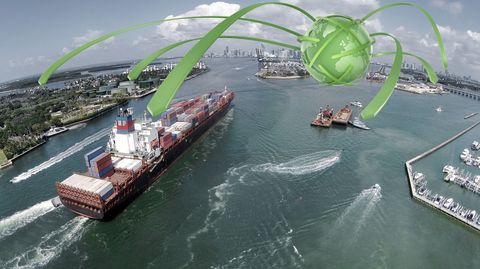For companies doing business in and around the European Union in the 21st century, there can be little doubt that statistics and data play a key role in informing their decision-making processes.
The importance of accurate data is only likely to become more and more prevalent as the world of technology evolves, making it more vital than ever before that companies make themselves aware of the ins and outs of the Intrastat system, which helps to generate this data on an EU-wide basis.
Introduced in 1993, Intrastat is now an essential component of the EU's economic infrastructure - but it only remains effective and useful as long as companies ensure they do the necessary paperwork to provide Intrastat data as and when it is required.
An overview
In simple terms, Intrastat is the system used to collate statistics on the trade in goods between EU member states, with services excluded other than in a handful of cases.
It has been in operation since the single market came into effect and replaced customs declarations as a source of trade statistics within the EU. By asking companies to provide data on their trading activities above a certain threshold, it is possible for the European statistical office Eurostat to collate a comprehensive bank of comparable and reliable data.
This information is of crucial importance to everyone involved in the European trade ecosystem, from governments through to businesses themselves. In broad economic terms, Intrastat data is used as an important indicator of a country's performance, informing future trade policy, interest rate changes and policymaking; indeed, this goes beyond being a national concern, as the data is also consulted by the European Commission, the European Central Bank and UN bodies such as the International Monetary Fund.
Individual companies can also benefit directly from the availability of Intrastat data, as it provides them with an opportunity to examine market trends, see which businesses are the frontrunners in a given field, identify potential commercial opportunities and ultimately achieve a greater level of success.
Legal responsibilities
However, in order to ensure these benefits are realised, it is essential that all companies doing business in the EU fulfil their legal responsibilities by diligently submitting Intrastat returns as and when they are required.
Businesses submitting declarations for Intrastat purposes must be sure to retain and provide the following information:
- their identification number
- the reference period
- the flow (arrival/dispatch)
- the commodity in question, using the eight-digit code of the EU's combined nomenclature
- the partner EU country;
- the value of the goods in the local currency
- the quantity of the goods
- the nature of the transaction
With the exception of Italy, each member country has an annually-set threshold value, below which a business is not required to file Intrastat forms. Many countries apply a different threshold for arrivals or dispatches, making it important for businesses to monitor changes to these values for each country in which they do business.
Companies will be expected to submit this documentation accurately and on time, bearing in mind that a failure to do so could be a criminal offence, particularly if they have a track record of late submissions. Those that find themselves in this position may be hit with a fine or even have legal proceedings filed against them, meaning this is a compliance issue that needs to be taken seriously.
Forward-thinking businesses should also make sure to keep copies of their filings to make sure all of their transactions and regulatory submissions are traceable and verifiable. For organisations that engage frequently in European trade, commercial software can help to automate the process of Intrastat returns.
For example, MIC INTRA is a dedicated Intrastat software package that offers an efficient and cost-effective solution for Intrastat reporting across all EU member states, automatically converting Intrastat dispatch data into country-specific Intrastat arrival reporting formats, as well as reducing system interfaces and minimising the need for manual intervention.
By taking this issue in hand, multinational companies can ensure they are fulfilling their regulatory obligations, while gaining a key advantage over their competitors.






